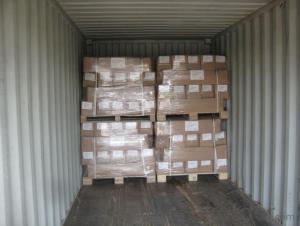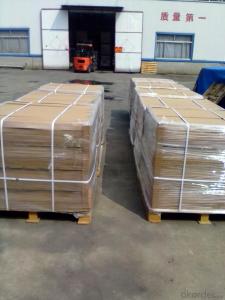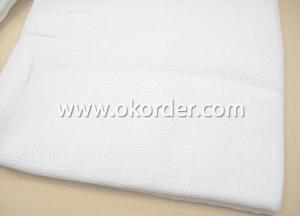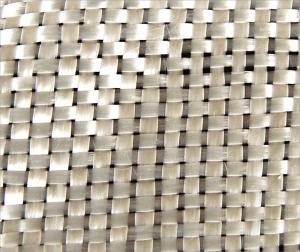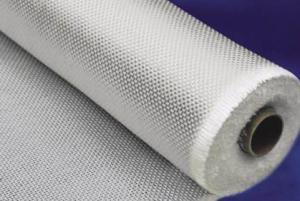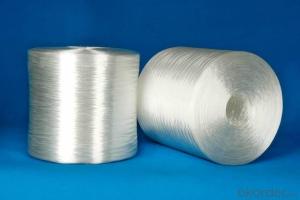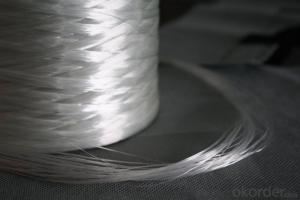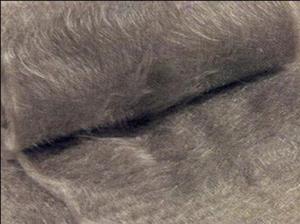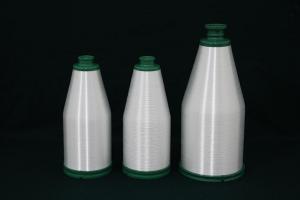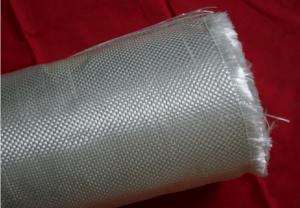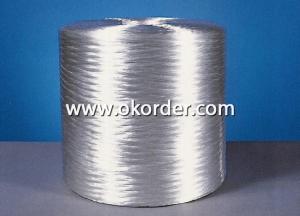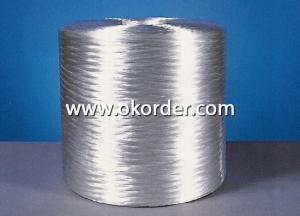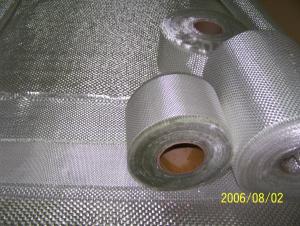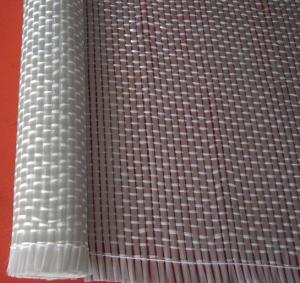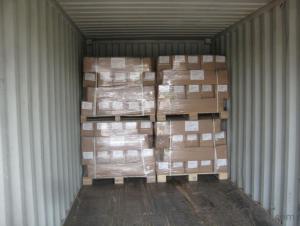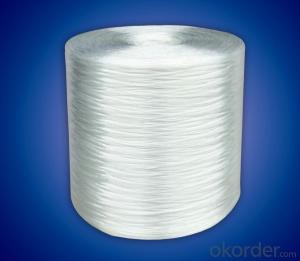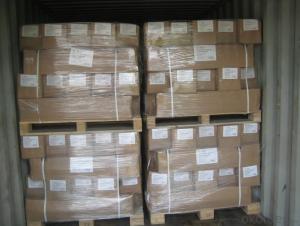C Glass Woven Roving 800gsm For FRP Usage
- Loading Port:
- China Main Port
- Payment Terms:
- TT or LC
- Min Order Qty:
- 17600 kg
- Supply Capability:
- 176000kg Per Month kg/month
OKorder Service Pledge
OKorder Financial Service
You Might Also Like
Product Description
1. C glass roving 800gsm are bidirectional fabric made by direct rovings in plain weave pattern.
2. Compatible with unsaturated polyester,vinylresin ,epoxy resin.
1. Consistent thickness and excellent surface treatment.
2. Rapid impregnating and good compatibility with resin.
3.Uniform tension,high dimensional stability and making handing easy.
Technical Data Sheet
TEST ITEM | STANDARD | STANDARD VALUE | AVERAGE VALUE | RESULT | ||
AREA WEIGHT (G/M2) | GB/T 9914.3-2001 | 800+/-64 | 810 | yes | ||
COEFFICIENT OF AREA WEIGHT VARIATION (%) | GB/T 9914.3-2001 | ≤6 | 2.89 | yes | ||
WIDTH (MM) | GB/T 4669-1995 | 1000±20MM | 1000 | YES | ||
FABRICS COUNT (ENDS/10CM) | WARP | GB/T 7689.2-2001 | 18±1.8 | 18 | yes | |
WEFT | GB/T 7689.2-2001 | 16±1.6 | 16 | YES | ||
TENSILE STRENGTH(N/50CM) | WARP | GB/T 7689.5-2001 | ≥3000 | 4165 | yes | |
WEFT | GB/T 7689.5-2001 | ≥2900 | 4123 | YES | ||
moisture CONTENT (%) | GB/T 9914.1-2001 | <=0.30 | 0.29 | yes | ||
LOSS ON IGNITION (%) | GB/T 9914.2-2001 | 0.4-0.8 | 0.58 | yes | ||
FAQ
1.Package:Eech roll is packed by polyester bag,and then put into a cardboard box or plastic wowen bag.The weight of each roll is between 20 to 85 Kg, The rolls are to be horizontally placed and could be in bulk or on pallet.
2.Storage:Optimum storage conditions are between the temperature of 5~35℃ and with the humidity between 35%~65%.The product should be used within 12 months from the time of delivery and remain in theiroriginal packaging until just prior to use.
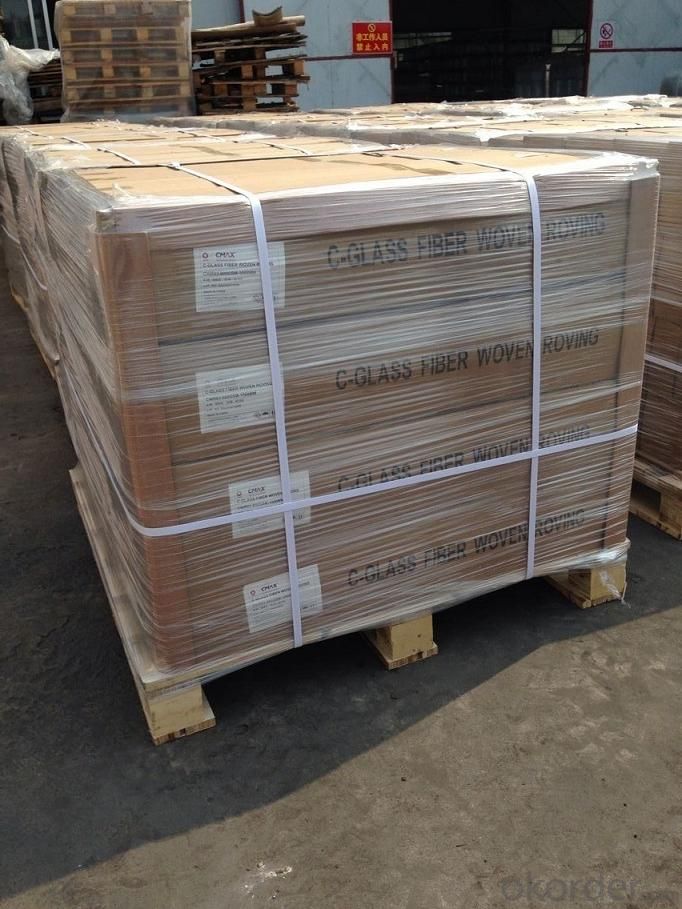
- Q:What is the material of glass steel? How to make it?
- Glass fiber reinforced plastic is a kind of composite material. It is common in everyday life. As a typical composite material, it is made by glass fiber and epoxy resin. In general, the glass fiber should be woven into a glass cloth, and then mix with the epoxy resin, the glass fiber reinforced plastic can be made after expoxy resin solidition. Epoxy resin itself is toxic, but the chemical properties is stable, and it is not harmful to human after solidation.
- Q:What are the advantages of the glass?reinforced?plastics antenna? What is the difference between an ordinary antenna and a glass?reinforced?plastics antenna?
- waterproof. structure of the antenna is different from the conventional vertical antenna, but the principle is the same. They all are sealed.
- Q:Introduction of inorganic glass fiber reinforced plastic air pipe
- Inorganic glass fiber reinforced plastic air pipe, according to the properties of the binding materials, can be divides into: Made of binding materials with glass fiber mesh cloth hydraulicity inorganic glass steel duct and made of cementitious materials and glass fiber mesh air hardening modified magnesium oxychloride cement duct with two types of modified magnesium oxychloride cement to the sulfate type. The pH value of the hardened material should be less than 8.8, and there is no alkalinity corrosion of the glass fiber. Inorganic glass steel duct should be used alkali-free, medium alkali or alkali resistant glass fiber mesh cloth, and are consistent with current national standard "glass fiber grid" JC561, "the alkali free glass fiber roving," JC/T281, "in the alkali glass fiber roving" JC/T576 regulations. The quality of magnesium oxychloride cement duct Magnesium Oxide should comply with the national standard "Magnesium Oxide" light burned magnesite products with WB/T1019-2002 regulations. Inorganic glass steel duct can divided into the overall common type (non insulation), integral insulation type (inner and outer surface of inorganic glass steel, middle insulating material) and combination type (by special adhesive, composite plate, flange, reinforcement angle etc) and the combination of insulation, its production parameters should comply with the provisions of the table 1, 2, 3. The longitudinal and transverse lap joint distance between adjacent layers of glass fiber grid cloth should be more than 300mm, and the distance of the same layer lap joint shall not be less than 500mm. Lap length should be greater than 50mm. The wind pipe surface thickness of the slurry flating glass fiber mesh cloth is appropriate. And the surface do not have dense pores and spillage.
- Q:What are the types of glass fiber yarns?
- According to different diameter, glass fiber yarn can be divided into yarn and roving general. The yarn is usually used for producing curtains.
- Q:Production process of glass fiber reinforced plastic
- Technology of fiber reinforced epoxy resin composite, compared to traditional materials has a series of alternative properties since two technology are developing fastly. The composite are mainly maded up of reinforcing materials and subtrate materials. Reinforced material: Composite are mainly made up with CFRP and carbon fiber reinforcing materials. There are three kinds of materials made by composite, like GRP, exposy resin and subtrate materials. In this paper, epoxy resin composites use epoxy resin matrix, with the low curing shrinkage rate only 1%-3% and high saturated polyester resin, as high as 7%-8% and good adhesion; B phase is benefit to the production process; low curing volatile low curing stress; the performance of chemical resistance, good electrical insulation performance value ring oxygen resin solvent, alkali resistant machine performance compared with full power and phenolic acid polyester fat good; curing as a brittle, poor toughness 2 epoxy glass steel (ASTM) FW (fiber) epoxy resin and its products with steel manufacturing glass fiber enhanced
- Q:The difference among organic glass, glass steel and acrylic.
- It is composed of methyl methacrylate monomer (MMA) polymerization, having the same life of the building. After a special process, the two kinds of composite organic glass acrylic (acrylic) can be compound, with the English name Acrylic. The extrusion can better control the thickness of the plate.
- Q:What is the difference between the glass and glass?reinforced?plastics?
- Glass and glass?reinforced?plastics is totally different two things.Generally speaking, glass?reinforced?plastics is a kind of plastics with cloth or felt made by glass fiber as reinforced plastics.
- Q:What is glass fiber for?
- Glass fiber is a kind of excellent inorganic non-metallic materials with a great variety. It has many advantages such as good insulation, strong heat resistance, good corrosion resistance and high mechanical strength, but its disadvantage is brittle and poor wear resistance. It uses glass ball or waste glass as raw materials and is formed by high temperature melting, wire drawing, winding and weaving. The filament diameter is from several microns to over twenty micron which is equal to 1/20-1/5 of a hair with each bundle is formed by hundreds or even thousands of monofilament. Glass fiber is often used as the reinforced material in the composite material, electrical insulating materials and heat or thermal insulation materials. It is widely used in national economy field such as circuit board. Twistless roving is composed of parallel raw silk or parallel filaments. According to glass composition, twistless roving glass can be divided into good or better resin permeability. alkali free glass twistless roving and medium alkali glass twistless roving The diameter of glass fiber used in the production of glass roving is from 12 to 23 μm . The number of twistless roving is from 150 to 9600 (tex). Twistless roving can be directly used for producing some composite material with high content of glass?fiber. (6) In the preform process, twistless roving is widely used; Twistless roving has a good property of degradation and each bundle fibers is formed by hundreds or even thousands of monofilament. Twistless roving used for pultrusion can be formed by combined multiple strands or twistless roving. The diameter of glass fiber used in the production of glass roving is from 12 to 23 μm .
- Q:How to deal with the folding force of glass fiber plastic coated yarn.
- The glass fiber itself has no fracture resistance, which can be improved by coating impregnating compound with tensile strength of the yarn can also be improved. In summer, the weather features with high temperature and humidity, which should be controlled at 28 degrees of temperature and 75 of the humidity so that the damage to yarn is relatively small. You may consider to improve the toughness of the coating material.
1. Manufacturer Overview |
|
|---|---|
| Location | |
| Year Established | |
| Annual Output Value | |
| Main Markets | |
| Company Certifications | |
2. Manufacturer Certificates |
|
|---|---|
| a) Certification Name | |
| Range | |
| Reference | |
| Validity Period | |
3. Manufacturer Capability |
|
|---|---|
| a)Trade Capacity | |
| Nearest Port | |
| Export Percentage | |
| No.of Employees in Trade Department | |
| Language Spoken: | |
| b)Factory Information | |
| Factory Size: | |
| No. of Production Lines | |
| Contract Manufacturing | |
| Product Price Range | |
Send your message to us
C Glass Woven Roving 800gsm For FRP Usage
- Loading Port:
- China Main Port
- Payment Terms:
- TT or LC
- Min Order Qty:
- 17600 kg
- Supply Capability:
- 176000kg Per Month kg/month
OKorder Service Pledge
OKorder Financial Service
Similar products
New products
Hot products
Related keywords
